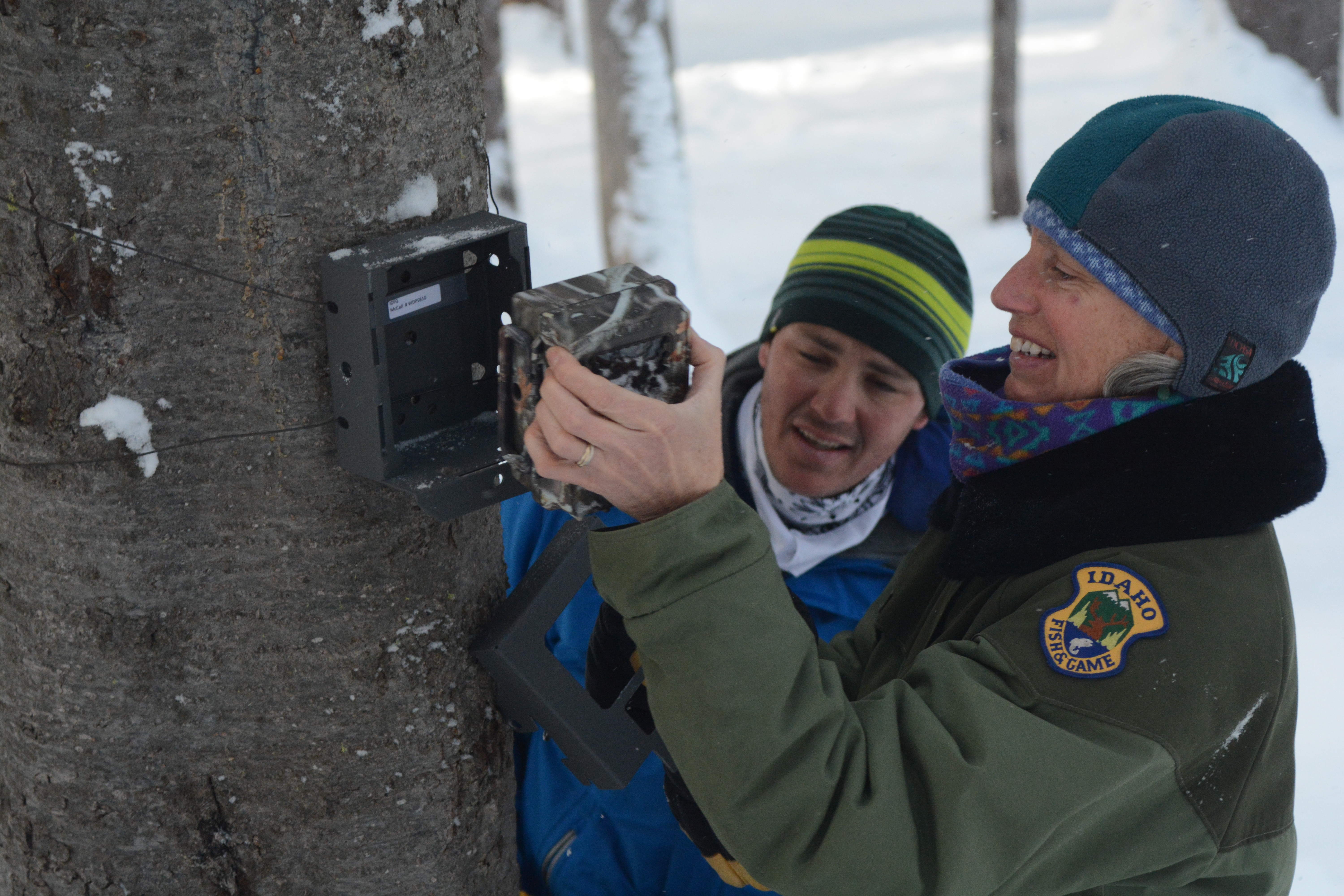The forest floor has a thick blanket of snow topped by a layer of bone-chilling air that’s so still a creaking tree sounds like an airhorn. It appears all animals have abandoned the forest for warmer climes, but biologist Diane Evans Mack’s remote cameras tell a different story.

A handful of hardy animals roam Idaho’s snowy, mountainous forests, and among them are wolverines. Only a tiny fraction of the public has ever encountered one, and it’s difficult to determine how many are out there, but Idaho Fish and Game is trying to learn where they live, or at least, where they are likely to live.
Wolverines are solitary animals that inhabit large swaths of rugged mountainous terrain in very small numbers, and Fish and Game biologists are trying to determine where wolverines live in Idaho. It’s part of a four-state project with Wyoming, Montana and Washington that’s trying to predict the likelihood that wolverine inhabit certain areas.

Biologists across the four states identified suitable wolverine habitat and overlaid a grid onto the map, then randomly selected grid cells and placed cameras in them during October and November. Each camera site is as uniform as possible with the same model of camera, same bait, and same array of four wire brushes that jut out from the trunk at 90 degree angles. The brushes catch hair as the animals climb the trunk to get the bait. Having hair samples gives biologists a genetic sample so they can tell if more than one wolverine visited the site, or if it’s a known individual from a previous study

Through the research, biologists will generate a “probability of occupancy map” that predicts the chances of wolverines being present in a given area of suitable habitat.
Understanding and managing all of Idaho’s wildlife is part of the agency’s mission, and at times, it can be challenging. Knowing where wolverines are likely to live helps managers understand their needs and have baseline data about their habitat and population.
Wildlife technicians Luke Ferguson of McCall and Peter Ott of Marsing face long winter treks into Central Idaho’s mountains to check the cameras and retrieve the memory cards.
They ride snowmobiles and ski into remote sites that are typically between 7,000 and 9,000 feet during some of the most inhospitable winter weather. Short day light hours and up to 66-mile, round-trip snowmobile/ski trips mean they’re up long before sunrise and making long drives so they can be at the trailhead at first light.
“It’s a lot of fun and real rewarding, but it’s not easy,” Ott said.

Not only do they check the cameras’ memory cards, they have to replace the bait, which is road-killed deer or elk quarters (which they also have to collect). An additional lure is is a sponge saturated with a viscous blend of skunk scent and beaver castor, which is a combo that smells as pungent as it sounds.
After a long day of winter driving and backcountry trekking, the highlight of their trip is downloading the card onto a computer to see what visited their bait sites.
“So far, we’ve had an animal of some variety on every camera,” Ferguson said.
Aside from wolverines, their cameras have captured fishers, martens, birds, foxes, coyotes, wolves and even deer before the snow got too deep.
Some cameras are placed in areas that are so remote they can’t feasibly be checked during winter. Those have a slightly different system in place. Instead of a deer leg, a cow’s femur is attached to the tree and a special container periodically drips scent onto the femur. Those cameras will be checked and recovered in the spring after the project wraps up for the season.
One of the 61 sites in Idaho where cameras are stationed is about 12 miles northeast of McCall, an area where wolverines have been known to inhabit in recent years.
The camera triggered a sequence of five photos whenever there was movement at the bait site, and it recorded an intriguing scene in time lapse where at least one wolverine and American marten consumed an entire deer leg during a series of visits.
Through digital images, the scene showed that the silent, seemingly lifeless forest was actually a hub of activity for these specialized predators. (See video below.)
If it was a male wolverine, chances are good it was the only one in the area. Males are highly territorial and can claim up to 500 square miles of exclusive territory while typically allowing a few females to share that terrain, but they have an uncanny knack for securing it from other males.
Previous research in the McCall area showed a clear demarcation line between two adjacent males' territories. Data from radio telemetry collars showed their locations throughout winter, and the locations of one is represented by purple dots and the other blue dots. Except for a few cross overs along the border, each respected the other's territory.

Why would a wolverine remain in the forest during winter when nearly all of its prey has migrated to lower elevations or hibernated? The why part is unknown, but scientists know how they survive winter conditions that would likely kill other animals.
During winter, wolverines largely switch from carnivores to scavengers, and they’re experts at finding and consuming carrion, which explains how a frozen deer leg was devoured like a Thanksgiving turkey.
Wolverines can find food beneath a thick layer of snow, and they even have a specialized upper molar in the back of their mouths that helps them chew meat that’s frozen solid.
That ability to find food in the dead of winter is key to Fish and Game’s project. Ferguson and Ott will continue to brave winter weather to discover secrets that the cold, silent woods reveal thanks to modern technology, skunk scent, a frozen deer leg and wolverine’s keen senses.

